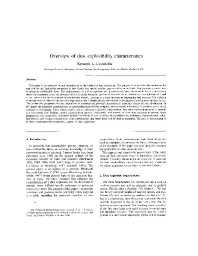Mining Publication: Overview of Dust Explosibility Characteristics
Original creation date: May 2000
This paper is an overview of and introduction to the subject of dust explosions. The purpose is to provide information on the explosibility and ignitability properties of dust clouds that can be used to improve safety in industries that generate, process, use, or transport combustible dusts. The requirements for a dust explosion are: a combustible dust, dispersed in air, a concentration above the flammable limit, the presence of a sufficiently energetic ignition source, and some confinement. An explosion of a fuel in air involves the rapid oxidation of a combustible material, leading to a rapid increase in temperature and pressure. The violence of an explosion is related to the rate of energy release due to chemical reactions relative to the degree of confinement and heat losses. The combustion properties of a dust depend on its chemical and physical characteristics, especially its particle size distribution. In this paper, the explosion characteristics of combustible dusts will be compared and contrasted with those of flammable gases, using methane as an example. These characteristics include minimum explosible concentration, maximum explosion pressure, maximum rate of pressure rise, limiting oxygen concentration, ignition temperature, and amount of inert dust necessary to prevent flame propagation. The parameters considered include the effects of dust volatility, dust particle size, turbulence, initial pressure, initial temperature, and oxygen concentration. Both carbonaceous and metal dusts will be used as examples. The goal of this research is to better understand the fundamental aspects of dust explosions.
Authors: KL Cashdollar
Peer Reviewed Journal Article - May 2000
NIOSHTIC2 Number: 20020625
J Loss Prev Process Ind 2000 May 13(3-5); :183-199
See Also
- Experimental Mine and Laboratory Dust Explosion Research at NIOSH
- Explosion Temperatures and Pressures of Metals and Other Elemental Dust Clouds
- Ignition of Methane-Air Mixtures by Laser Heated Small Particles
- Methane and Dust Control by Water Infusion: Pittsburgh Coalbed (Fairview, W. Va.)
- Methane-Air Mixtures Ignited by CW Laser-Heated Targets on Optical Fiber Tips: Comparison of Targets, Optical Fibers, and Ignition Delays
- A New Method to Clean Dust from Soiled Work Clothes
- NIOSH Hazard ID 4 - Ignition Hazard from Drilling into Sealed Frames of Agricultural Equipment
- Reducing Dust Exposure from Contaminated Work Clothing with a Stand-Alone Cleaning System
- Technology News 473 - The Explosion Hazard From Hydrogen Gas Generation Inside Sealed Frames
- Technology News 485 - Improved Cab Air Inlet Location Reduces Dust Levels and Air Filter Loading Rates
- Content source: National Institute for Occupational Safety and Health, Mining Program


 ShareCompartir
ShareCompartir
